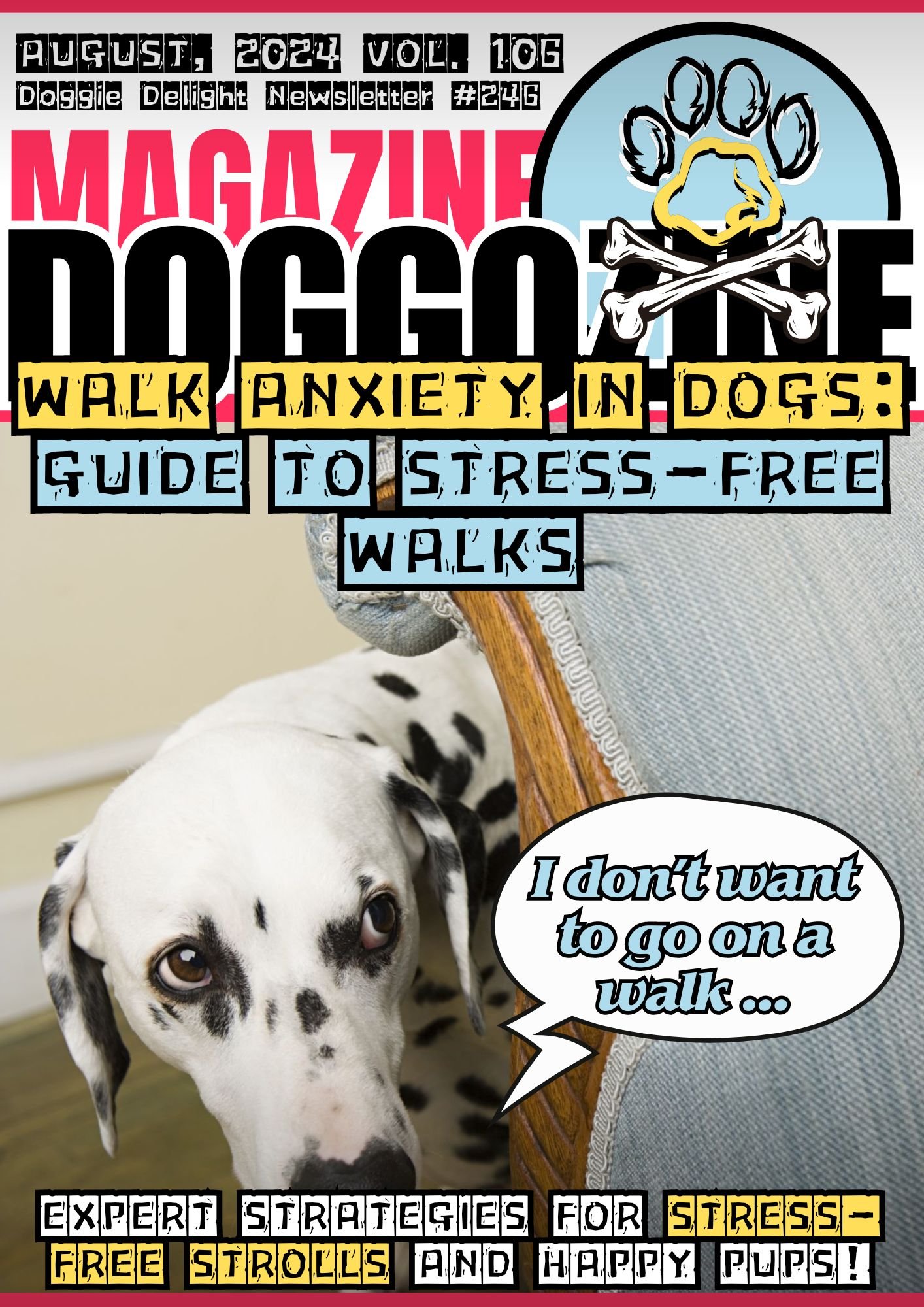
CONQUER WALK ANXIETY IN DOGS
Is your furry companion’s walk anxiety causing stress and tension during your strolls? The hustle and bustle of outdoor excursions can turn into a daunting experience for both you and your pup. But fret not! By delving into the reasons behind walk anxiety in dogs and understanding your dog’s limits, you can effectively manage triggers and create harmonious walking routines.
Expert Strategies for Stress-free Strolls and Happy Pups!
In this expert guide, we unveil proven strategies to transform those anxious walks into peaceful and enjoyable outings for your beloved four-legged friend. Discover practical tips on desensitization techniques, positive reinforcement, and preparing for walks with insights from professional trainers.
Whether it’s identifying anxiety symptoms or exploring alternatives to traditional walks, this guide equips you with the tools to foster a calm demeanor and strengthen your bond with your pet. Embark on a journey towards stress-free strolls and happier pups today, as we navigate through essential strategies to conquer walk anxiety with care and expertise.
Reasons for Walk Anxiety in Dogs
Walking your dog should be a fun, enjoyable experience. But for some pups, it’s a source of anxiety and stress. Does your dog bark, lunge, or cower at the sight of other dogs, people, or vehicles during walks? These are signs of a reactive dog exhibiting reactive behavior. Various types of dog anxiety can trigger these responses, such as fear, separation anxiety, or overstimulation.
Common dog anxiety symptoms include panting, shaking, whining, or even aggression. For example, if your dog was once frightened by a loud truck zooming by, they may associate walks with that scary experience and become anxious every time you grab the leash. Understanding the root cause of your dog’s anxiety is key to helping them overcome it.
Common Triggers for Walk Anxiety in Dogs
- Other dogs or animals
- Unfamiliar people
- Loud noises (traffic, construction, etc.)
- New or strange environments
With patience, training, and positive reinforcement, you can help your furry friend conquer their fears and enjoy stress-free strolls together.
🔑 Key Points: Identifying the specific triggers that cause your dog’s reactive behavior is the first step in managing their walk anxiety.
Understanding Your Dog’s Limits
Every dog has a different tolerance level for stressors. One pup may be fine walking by a busy road, while another shutters at the sound of a passing car. Pay close attention to your dog’s body language during walks. Are their ears back, tail tucked, or body lowered? These are signs that they’re nearing their stress limit.
A dog’s autonomic nervous system kicks into high gear when they’re anxious, leading to that “fight, flight, or freeze” response. Imagine how overwhelming it must feel for a nervous dog to be bombarded by triggers they can’t escape. As a caring owner, it’s crucial to understand and respect your dog’s boundaries.
Tips for Gauging Your Dog’s Limits
- Watch for subtle signs of stress (yawning, lip licking, shaking off)
- Keep initial walks short in duration
- Avoid known triggers whenever possible
- Let your dog set the pace and direction
By staying attuned to your dog’s needs and signals, you can help prevent them from reaching that point of panic and work within their comfort zone.
🔑 Key Points: Respecting your dog’s stress limits and avoiding overwhelming situations is essential for managing walk anxiety.

PREPARING FOR WALKS: TRAINING AND DESENSITIZATION TECHNIQUES
Before heading out the door, take time to properly prepare your pup. Just like you wouldn’t run a marathon without training, your dog needs to build up their tolerance to triggers slowly. Seek guidance from a professional dog trainer who can develop a customized training program for your dog’s specific needs.
Gradually Expose Your Dog To Their Triggers
Effective training techniques, such as positive reinforcement and desensitization, can make a world of difference. With desensitization, you gradually expose your dog to their triggers at a distance and intensity they can handle, rewarding calm behavior along the way.
For example, let’s say your dog barks at the sight of another pup. Start by having a friend with a calm dog stand far away, and give your dog treats for not reacting. Slowly decrease the distance over time, always keeping your dog under threshold. The goal is to help your dog develop positive associations with their triggers through consistent, patient training.
Tips for Successful Desensitization Training
- Start with the least intense version of the trigger
- Use high-value treats or toys as rewards
- Keep training sessions short and positive
- Go at your dog’s pace and never force interaction
Remember, every small step in the right direction is worth celebrating. With dedication and a positive attitude, you and your furry friend will be strolling with confidence in no time.
🔑 Key Points: Proper preparation through positive reinforcement training and desensitization techniques can help your dog overcome walk anxiety and build confidence.
Effective Strategies for Managing Walk Anxiety in Dogs During Walks
Even with the best training, there may be times when your dog gets overwhelmed during a walk. Having a toolbox of strategies to manage these moments can make all the difference. One effective approach is learning to anticipate and avoid triggers whenever possible. If you know your dog gets anxious around big dogs, steer clear of the dog park during busy hours.
Should you encounter a trigger unexpectedly, remain calm and be ready to create distance. A simple U-turn or ducking behind a parked car can give your dog the space they need to feel safe. Brush up on your leash handling skills, too. A short, loose leash allows for better communication and control compared to a tight, restrictive one.
And don’t forget the power of positive reinforcement. Reward your dog with treats, praise, and playtime for staying calm in the face of triggers. With time and practice, your dog will start to associate previously scary situations with good things, helping to put their anxious minds at ease.
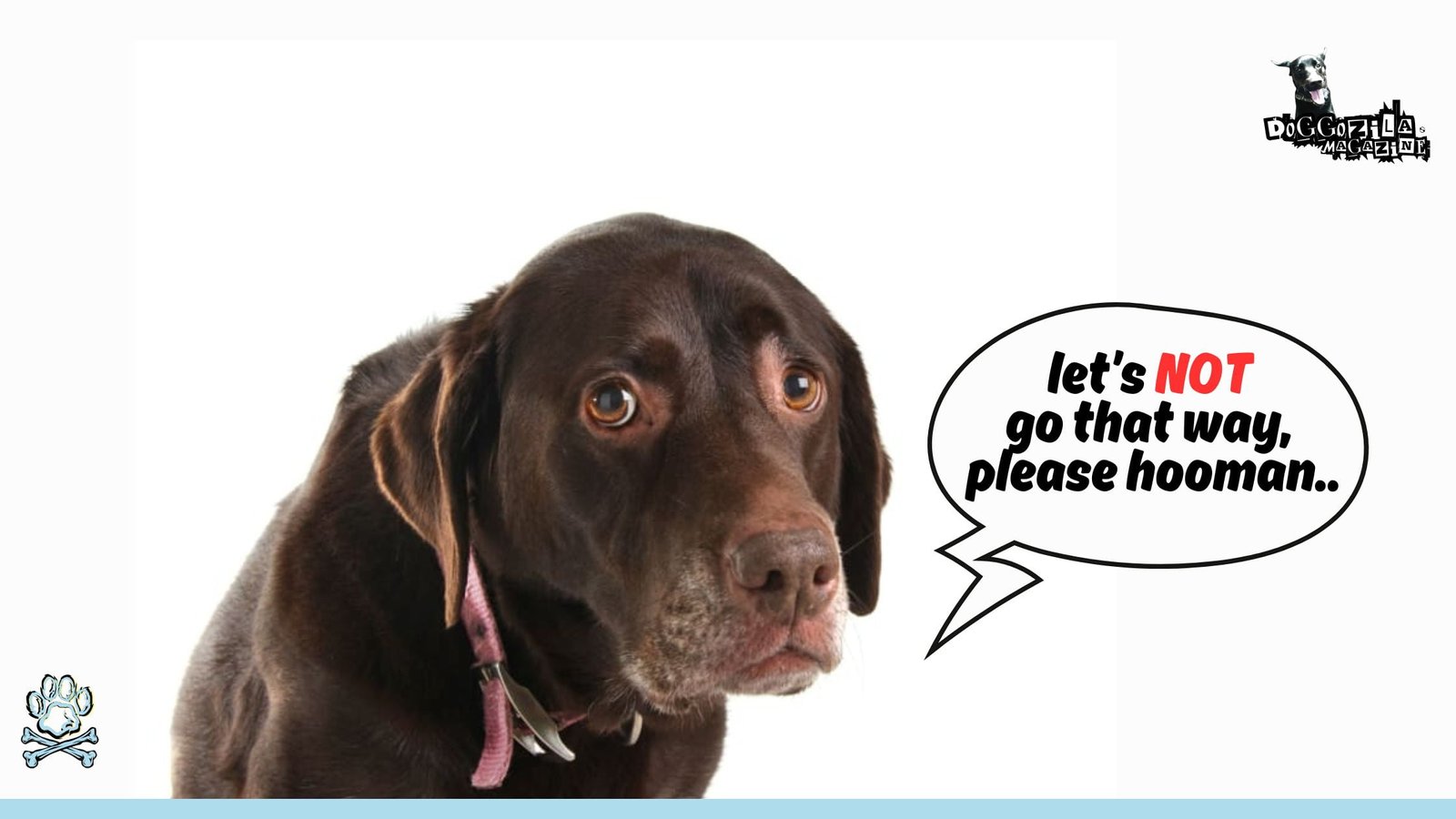
Quick Tips for Managing Walk Anxiety in Dogs on the Spot
- Remain calm and confident
- Create distance from triggers
- Use treats or toys to redirect attention
- Practice loose leash walking
- Offer verbal praise and reassurance
If your dog’s anxiety is severe or not improving despite your best efforts, don’t hesitate to seek professional help. A certified dog trainer or veterinary behaviorist can provide personalized guidance to get you and your pup on the path to stress-free strolls.
Real-World Example
Sarah had been struggling to walk her reactive dog, Max, due to his intense anxiety around other dogs. By working with a trainer on desensitization techniques and proper leash handling, Sarah learned to manage Max’s triggers and reward his calm behavior. With consistent practice and patience, Max began to associate seeing other dogs with positive experiences, and their walks became much more enjoyable for both of them.
🔑 Key Points: Managing triggers, practicing proper leash handling, and using positive reinforcement are key strategies for reducing anxiety during walks and fostering a harmonious walking routine.
Alternatives to Traditional Walks
When walk anxiety is severe, it’s okay to take a break from traditional walks and focus on other ways to meet your dog’s needs. Enrichment activities at home can provide the mental stimulation and physical exercise your dog craves without the added stress of outside triggers.
Puzzle feeders, snuffle mats, and interactive toys are great options for keeping your dog’s mind busy and their body active. You can also create an indoor agility course using household items like hula hoops, blankets, and boxes for your dog to navigate.
Don’t forget the importance of quality time with you, too. Engage your anxious dog in games of tug, hide-and-seek, or simply cuddle up together for some much-needed bonding. And when you’re ready to venture outside again, consider exploring quiet, low-traffic areas like hiking trails or secluded parks for a more peaceful walking experience.
Creative Enrichment Ideas
- DIY puzzle feeders (ex. rolling treats in a towel)
- Nose work games (hiding treats around the house)
- Indoor obstacle courses
- Teaching new tricks
- Supervised play with a calm canine companion
Remember, every dog is different, and what works for one may not work for another. Be patient, get creative, and prioritize your dog’s comfort above all else.
🔑 Key Points: Enrichment activities at home and exploring low-traffic outdoor areas can provide the exercise and stimulation your anxious dog needs while avoiding overwhelming triggers.
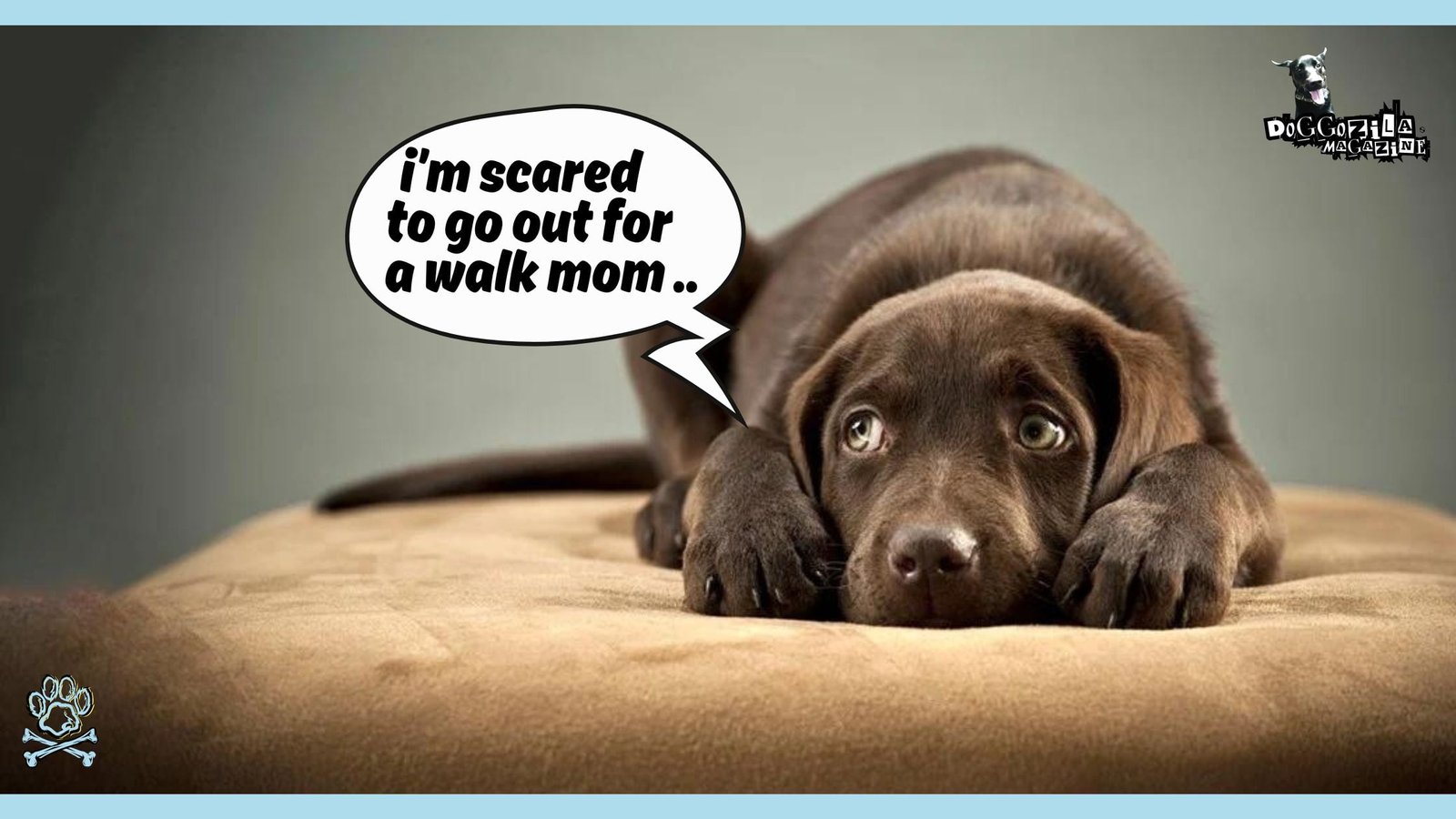
SYMPTOMS AND TYPES OF WALK ANXIETY IN DOGS
Anxiety in dogs can manifest in various ways, and it’s important to recognize the signs so you can offer appropriate support.
Common Symptoms of Walk Anxiety in Dogs
- Excessive barking or whining
- Panting or drooling
- Trembling or shaking
- Pacing or restlessness
- Destructive behavior (chewing, digging)
- Attempting to escape
- Urinating or defecating in the house
Anxiety can also take different forms, such as separation anxiety (distress when left alone), fear-related anxiety (triggered by specific stimuli), or generalized anxiety (persistent, excessive worry). If your dog exhibits any of these symptoms, it’s crucial to seek guidance from your veterinarian or a professional dog trainer. They can help you identify the type of anxiety your dog is experiencing and develop a tailored treatment plan.
🔑 Key Points: Recognizing the symptoms and types of dog anxiety is essential for providing the appropriate support and treatment for your furry friend.
Calming An Anxious Dog With Supplements and Medications
In some cases, your veterinarian may recommend supplements or medications to help manage your dog’s anxiety. Natural supplements like chamomile, L-theanine, or CBD oil can have calming effects on anxious dogs. Prescription medications such as fluoxetine (Prozac) or clomipramine (Clomicalm) may be necessary for more severe cases.
However, it’s important to note that the use of drugs should always be under the guidance of your dog’s veterinarian. Medications can be helpful tools in managing anxiety, but they should be used in conjunction with behavior modification training for the best long-term results.
🔑 Key Points: Supplements and medications can be effective tools in managing dog anxiety, but they should be used under veterinary guidance and in combination with behavior modification training.
The Role of a Professional Dog Trainer
Working with a professional dog trainer can make a world of difference in managing your dog’s anxiety. A skilled trainer can assess your dog’s specific needs, develop a customized training plan, and teach you the skills to effectively communicate with and support your anxious pup.
Look for a trainer who uses positive reinforcement techniques and has experience working with fearful or reactive dogs. They can help you navigate challenges, celebrate successes, and foster a strong, trusting relationship with your dog.
Remember, the goal of training is not to punish your dog for their anxiety but to help them develop the confidence and coping skills to thrive. With the guidance of a professional trainer, you and your dog can work together to conquer anxiety and achieve your training goals.
🔑 Key Points: A professional dog trainer can provide invaluable support and guidance in managing your dog’s anxiety through positive reinforcement techniques and personalized training plans.
Understanding and Addressing Separation Anxiety
Separation anxiety is a common type of anxiety in dogs, characterized by distress when left alone. Symptoms may include excessive barking, destructive behavior, or attempts to escape. To help your dog cope with separation anxiety, it’s important to teach them that being alone is not scary or threatening.
Start by leaving your dog alone for very short periods (even just a few seconds) and gradually increase the duration over time. Make sure your dog has a comfortable, safe space to retreat to, such as a crate or designated room. Crate training can be especially helpful for dogs with separation anxiety, as it provides a secure, den-like environment.
Before leaving, give your dog a special treat or toy to associate your absence with positive experiences. Avoid making a big fuss when coming and going, as this can increase your dog’s anxiety. With patience, consistency, and positive reinforcement, you can help your dog learn to feel calm and confident when alone. If your dog’s separation anxiety is severe or not improving, consult with a professional trainer or veterinary behaviorist for personalized guidance.
🔑 Key Points: Separation anxiety can be managed through gradual exposure, positive reinforcement, and creating a safe, comfortable environment for your dog when alone.
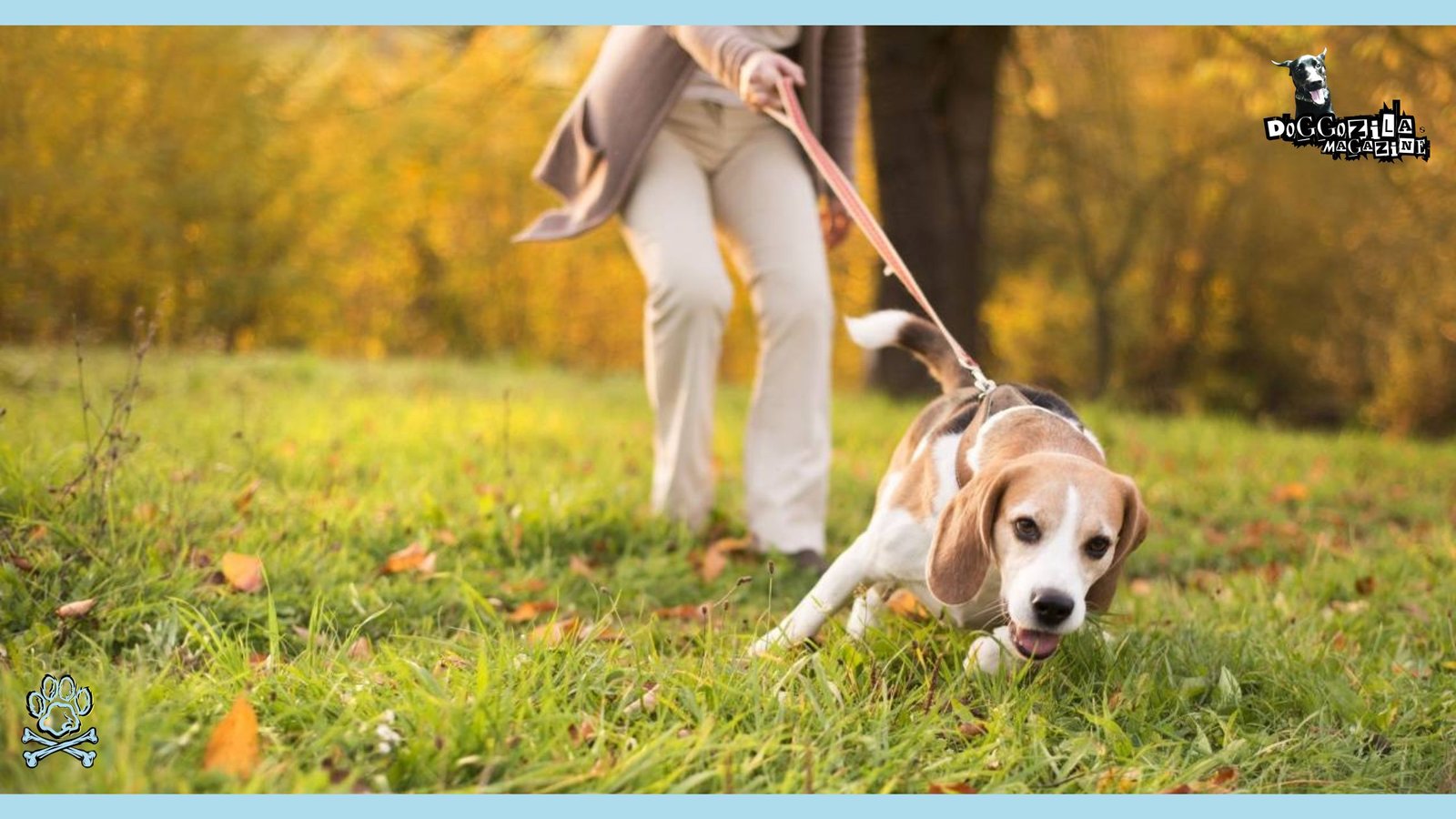
ESSENTIAL TIPS FOR A STRESS-FREE WALK
Walking your dog should be a fun, bonding experience for both of you. By implementing some simple strategies, you can help ensure your walks are stress-free and enjoyable.
Steps To Take For Great Walking Adventure
First, make sure you’re using the right equipment. A well-fitted harness or head halter can provide better control and comfort compared to a traditional collar. Start your walk in a calm, positive state of mind. If you’re feeling stressed or anxious, your dog will pick up on those emotions.
Take a few deep breaths, put on a smile, and set the tone for a relaxed outing. During the walk, be proactive in managing triggers. Keep an eye out for potential stressors and create distance or distractions as needed. Use positive reinforcement to reward your dog for calm behavior, such as praise, treats, or a favorite toy.
If your dog does react to a trigger, stay calm and avoid punishing them. Instead, calmly redirect their attention and move away from the situation. Remember, every walk is a training opportunity. Practice loose leash walking, reward check-ins, and reinforce polite greetings with people and dogs you encounter. Above all, be patient and consistent. Conquering anxiety takes time, but with dedication and a positive attitude, you and your dog can enjoy many happy, stress-free walks together.
🔑 Key Points: The key to stress-free walks is using the right equipment, staying calm and positive, managing triggers proactively, and consistently reinforcing good behavior through positive techniques.
Implementing Positive Reinforcement Techniques
Positive reinforcement is a powerful training approach that can help your dog overcome anxiety and build confidence. The basic principle is simple: reward the behaviors you want to see more of. For example, if your dog remains calm when passing another dog on a walk, immediately offer praise and a tasty treat.
Consistency is key. The more you reinforce desired behaviors, the more likely your dog is to repeat them. Keep treats or toys on hand during walks so you’re always ready to reward good choices. Remember, reinforcement doesn’t always have to be food-based. Verbal praise, petting, or playtime can be just as effective rewards.
Experiment with different types of reinforcement to find what motivates your dog the most. Used consistently and correctly, positive reinforcement is an incredibly effective tool in managing anxiety and fostering a confident, well-behaved pup.
🔑 Key Points: Consistently rewarding desired behaviors through positive reinforcement is a powerful way to help your dog overcome anxiety and build confidence.
Addressing Behavioral Issues with Training Collars and Bark Collars
When it comes to managing anxiety-related behaviors like excessive barking or leash reactivity, some owners may consider using training collars or bark collars. While these tools can be effective in interrupting unwanted behaviors, they should be used with caution and only under the guidance of a professional trainer.
Aversive training tools like shock collars or prong collars rely on negative reinforcement, which can sometimes worsen anxiety and fear in dogs. The discomfort or pain associated with these collars may temporarily suppress the behavior but does not address the underlying emotional state of the dog.
In contrast, positive reinforcement training focuses on rewarding desired behaviors and helping the dog develop coping skills to manage their anxiety. This approach leads to a stronger, more trusting relationship between dog and owner and promotes long-term behavioral change. If you are considering using a training collar or bark collar, consult with a certified professional dog trainer first.
They can assess whether these tools are appropriate for your dog’s specific needs and teach you how to use them safely and effectively in combination with positive reinforcement techniques. Remember, the goal is not just to stop unwanted behaviors but to help your dog feel more confident and secure in triggering situations.
🔑 Key Points: While training collars and bark collars can interrupt unwanted behaviors, they should be used cautiously and in conjunction with positive reinforcement training to effectively address anxiety-related issues.
How to Foster a Calm Demeanor in Your Dog
A calm, confident demeanor is key to helping your dog manage anxiety and enjoy stress-free walks. As a dog owner, you have the power to influence your dog’s emotional state through your own actions and energy. When preparing for a walk, take a few moments to center yourself and adopt a relaxed, positive attitude.
During the walk, keep a loose leash and relaxed body posture. Avoid tensing up or tightening the leash when you see a trigger, as this can communicate to your dog that there is something to be worried about.
Instead, keep your movements calm and confident, and use verbal cues like “easy” or “let’s go” to redirect your dog’s attention. If your dog does become anxious, resist the urge to coddle or soothe them excessively, as this may reinforce the fearful behavior.
Instead, calmly lead them away from the stressor and engage them in a simple task like sitting or making eye contact to help them regain focus. Remember, your dog looks to you for guidance and reassurance. By modeling calm, confident energy, you can help them feel more at ease in challenging situations.
🔑 Key Points: Fostering a calm demeanor in your dog starts with your own actions and energy, including relaxed body posture, loose leash handling, and redirecting focus during stressful moments.
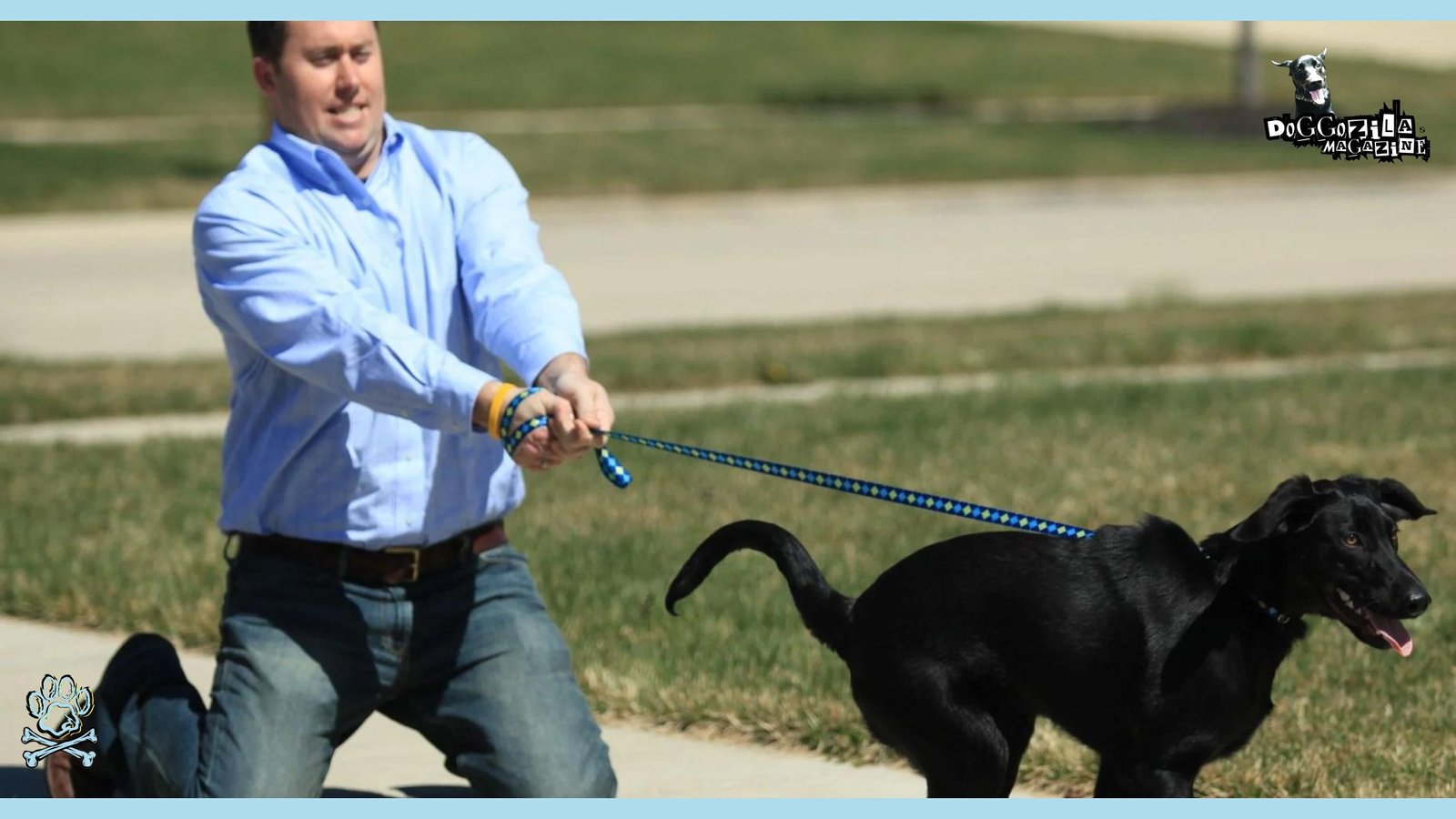
THE IMPORTANCE OF CONSISTENCY IN TRAINING AND DAILY ROUTINES FOR MANAGING WALK ANXIETY IN DOGS
Consistency is crucial when it comes to managing walk anxiety in dogs. Predictable routines and clear expectations help dogs feel secure and confident in their environment. Establish a daily schedule for feeding, exercise, and rest, and stick to it as much as possible.
When it comes to training, use the same cues, rewards, and consequences each time. This helps your dog understand what is expected of them and builds trust in your leadership. Consistency also applies to your own behavior and energy. Strive to maintain a calm, positive demeanor during walks and training sessions, even in the face of challenges.
🔑 Key Points: Consistency in daily routines, training approaches, and owner behavior is essential for helping anxious dogs feel secure and confident.
Seeking Additional Resources and Support
If you’re struggling to manage your dog’s anxiety on your own, don’t hesitate to seek additional support. Many online resources, such as training videos, forums, and articles, can provide valuable tips and insights. By fostering a calm demeanor and seeking professional help when needed, you pave the way for a stress-free walking routine that benefits both you and your furry companion.
The Takeaway on Walk Anxiety in Dogs
Conquering walk anxiety in dogs is not just about taking them for a stroll – it’s about understanding their fears, limits, and needs. By implementing the expert strategies outlined in this blog, you can transform stressful walks into harmonious bonding experiences with your beloved pup.
From identifying triggers to effective leash handling and positive reinforcement techniques, every step you take plays a crucial role in your dog’s well-being. Remember, consistency is key in training and daily routines. Embrace the journey of supporting your anxious dog with patience, love, and the right tools, and witness the transformation towards peaceful and joyful walks together.
Start implementing these strategies today to witness a positive change in your dog’s behavior and overall happiness.

Thank you for joining us on this insightful journey towards conquering walk anxiety in dogs.









